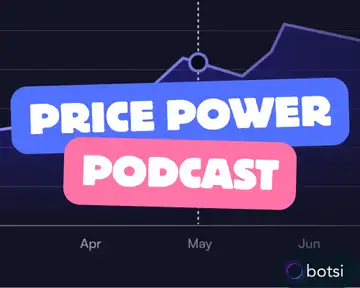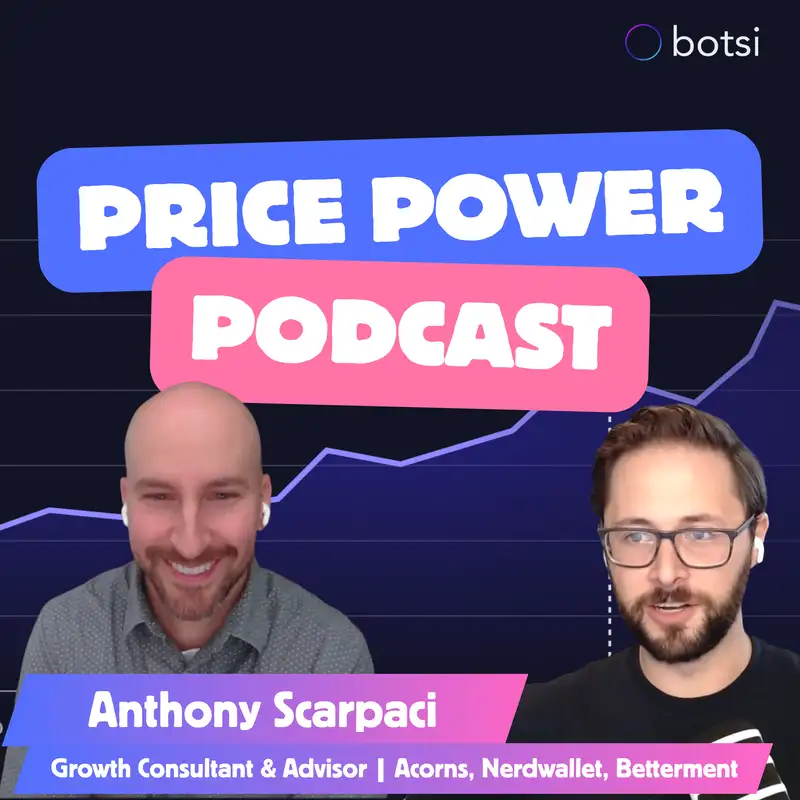Anthony Scarpaci, former Global VP of Growth at Acorns and senior leader at NerdWallet, Betterment, and Blue Apron, joins Jacob Rushfinn (CEO of Botsi) to break down how to build a referral program that performs. He shares his RIGHTT Framework—Relevance, Incentives, Guardrails, Human Centricity, Timing & Tracking—and real examples from fintech, meal kits, and subscription apps.
🧩 The RIGHT Framework
R = Relevance – Incentives should align with your product’s core value. Cash isn’t always king.
Example: GoHunt gives gear credits usable in-app and in its e-commerce store, keeping rewards tied to the customer experience.
I = Incentives – Make them motivating and credible. Urgency (limited-time offers) beats evergreen “set-and-forget” bonuses.
• Consumers are numb to “Give $10 Get $10.”
• Guaranteed rewards outperform sweepstakes—people act when they know they’ll get something.
• Tie incentives to meaningful product actions that predict retention.
G = Guardrails – Prevent gaming and fraud without killing usability.
The “optimal level of fraud is not zero.”
Every layer of anti-fraud friction hurts good users—accept some inefficiency for total-program scale.
• Analyze cohorts for retention / LTV gaps.
• Require real product usage (e.g., multiple deliveries in meal kits).
H = Human Centricity – Consistent, authentic, transparent experience across the entire journey.
• Map every touchpoint (ads → onboarding → referral share → reward delivery).
• Reinforce trust (“Your friend invited you”) and celebrate wins (“You earned $10—share again”).
T = Timing & Tracking –
• Launch after product-market fit and a healthy customer base.
• Introduce referral prompts at the right emotional moment: trial start or delight milestone.
• Maintain urgency windows for bursts of activity.
• Track cohorts, incremental lift, and blended CAC pre- / post-launch.
💡 Key Insights & Takeaways
• Referrals ≠ free users. Model unit economics and compare to your next-best acquisition channel (Meta, Google etc.).
• Halo & Cannibalization. Account for organic word-of-mouth you’d get anyway and the extra reach you gain when offers go viral.
• Accept some fraud. Zero-fraud programs over-optimize and add friction; “tolerable inefficiency” is a healthy cost of growth.
• Design for compounding. Great referrals create chains (friend → friend → friend), not single invites.
• Avoid conditioning. Don’t train users to expect giant promos forever—treat large bonuses as events, not defaults.
• Influencers as fuel. One creator’s post can 10× signups—plan for the viral halo but don’t depend on it.
• Higher-quality leads. Referred users retain better and cost less long-term—social proof raises both acquisition and retention.
🧠 AI Toolbox Anthony Uses
• Lovable / v0.dev / Replit V0 → No-code prototyping & mockups.
• Gemini transcription + Claude / ChatGPT → Strategy alignment & theme extraction from founder calls.
• OpusClip → Video editing & social creative velocity.
• Perplexity → Everyday research & voice-based learning.
🔗 Links & Resources
Anthony Scarpaci → https://www.linkedin.com/in/anthonyscarpaci/
Tunomatic → https://www.tunomatic.com/
Growth Notes Newsletter → https://tunomatic.substack.com/
🧩 The RIGHT Framework
R = Relevance – Incentives should align with your product’s core value. Cash isn’t always king.
Example: GoHunt gives gear credits usable in-app and in its e-commerce store, keeping rewards tied to the customer experience.
I = Incentives – Make them motivating and credible. Urgency (limited-time offers) beats evergreen “set-and-forget” bonuses.
• Consumers are numb to “Give $10 Get $10.”
• Guaranteed rewards outperform sweepstakes—people act when they know they’ll get something.
• Tie incentives to meaningful product actions that predict retention.
G = Guardrails – Prevent gaming and fraud without killing usability.
The “optimal level of fraud is not zero.”
Every layer of anti-fraud friction hurts good users—accept some inefficiency for total-program scale.
• Analyze cohorts for retention / LTV gaps.
• Require real product usage (e.g., multiple deliveries in meal kits).
H = Human Centricity – Consistent, authentic, transparent experience across the entire journey.
• Map every touchpoint (ads → onboarding → referral share → reward delivery).
• Reinforce trust (“Your friend invited you”) and celebrate wins (“You earned $10—share again”).
T = Timing & Tracking –
• Launch after product-market fit and a healthy customer base.
• Introduce referral prompts at the right emotional moment: trial start or delight milestone.
• Maintain urgency windows for bursts of activity.
• Track cohorts, incremental lift, and blended CAC pre- / post-launch.
💡 Key Insights & Takeaways
• Referrals ≠ free users. Model unit economics and compare to your next-best acquisition channel (Meta, Google etc.).
• Halo & Cannibalization. Account for organic word-of-mouth you’d get anyway and the extra reach you gain when offers go viral.
• Accept some fraud. Zero-fraud programs over-optimize and add friction; “tolerable inefficiency” is a healthy cost of growth.
• Design for compounding. Great referrals create chains (friend → friend → friend), not single invites.
• Avoid conditioning. Don’t train users to expect giant promos forever—treat large bonuses as events, not defaults.
• Influencers as fuel. One creator’s post can 10× signups—plan for the viral halo but don’t depend on it.
• Higher-quality leads. Referred users retain better and cost less long-term—social proof raises both acquisition and retention.
🧠 AI Toolbox Anthony Uses
• Lovable / v0.dev / Replit V0 → No-code prototyping & mockups.
• Gemini transcription + Claude / ChatGPT → Strategy alignment & theme extraction from founder calls.
• OpusClip → Video editing & social creative velocity.
• Perplexity → Everyday research & voice-based learning.
🔗 Links & Resources
Anthony Scarpaci → https://www.linkedin.com/in/anthonyscarpaci/
Tunomatic → https://www.tunomatic.com/
Growth Notes Newsletter → https://tunomatic.substack.com/

